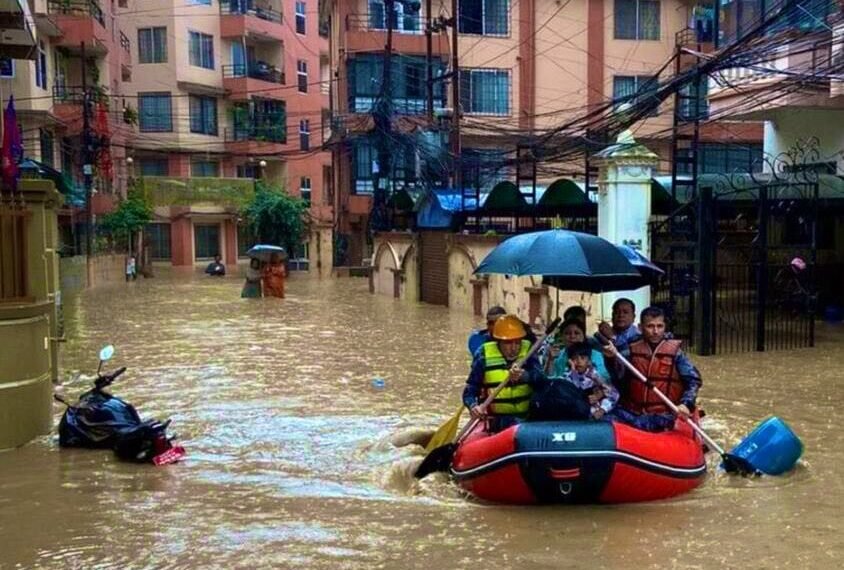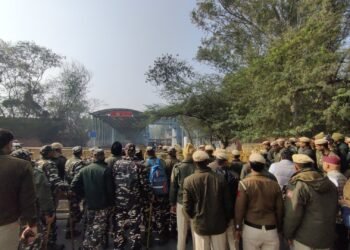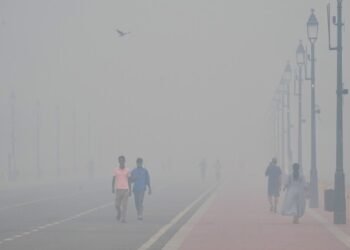Record-breaking rainfall in Northeast India has led to widespread flooding and landslides, causing significant loss of life and displacement. Experts warn this could be a precursor to greater devastation if the impacts of climate change are not urgently addressed through adaptation, preparedness, and global emissions reduction.
BY PC Bureau
Northeast India’s Deluge – A Stark Warning from a Changing Climate
June 1, 2025 – Northeast India is currently grappling with the devastating aftermath of relentless torrential rains, flash floods, and widespread landslides. The region, already prone to natural calamities during the monsoon, is witnessing an unprecedented scale of destruction that experts warn could be a stark precursor to even greater devastation in the years to come if the escalating impacts of climate change are not urgently addressed. As of today, the combined death toll from these rain-induced disasters across the seven northeastern states has tragically climbed to 32, with thousands displaced and critical infrastructure severely compromised.
The early onset and unusual ferocity of this year’s monsoon, intensified by a deep depression over north Bangladesh and adjoining Meghalaya, have pushed the region’s natural systems to their breaking point. Cities like Guwahati have been inundated, recording a staggering 111 mm of rain in a single day – the highest in 67 years – turning streets into rivers and submerging homes. Similar record-breaking rainfall has been observed in other areas, including Tezpur. This concentrated deluge has caused major rivers, notably the Brahmaputra and its tributaries, to swell beyond their capacity, leading to widespread inundation and triggering numerous landslides across the fragile hilly terrain.
Heavy rainfall for the past 3/4 days seriously affected normal life and commuters in all the India’s north eastern states.
Common efforts from Govt and the public is the need of the hour. @rashtrapatibhvn @INCIndia @BJP4India @UNEP @the_hindu @thewire_in @PTI_News pic.twitter.com/rENvVGdi4m
— Dr. Lamtinthang Haokip (@DrLamtinthangHk) May 31, 2025
Climate Change
While the Northeast is accustomed to heavy monsoon rains, the current intensity and erratic nature of the downpour bear the unmistakable signature of a changing climate. Meteorologists and environmental scientists have long warned that global warming is altering global weather patterns, leading to more frequent and extreme weather events. The current crisis serves as a grim validation of these predictions.
READ: All Seven NCP MLAs in Nagaland Merge with Ruling NDPP
“The Northeast is among India’s most climate-sensitive regions,” stated a senior official from the India Meteorological Department (IMD). “We are observing increasingly intense and erratic rainfall patterns. What we are witnessing now – short, sharp bursts of extremely heavy rain followed by periods of relative dryness – is a direct consequence of these climatic shifts. This makes the region far more vulnerable to flash floods and landslides.”
Studies on rainfall patterns in Northeast India have revealed a concerning trend: a decline in overall annual rainfall but a significant increase in the frequency and intensity of extreme precipitation events. This means that while the total volume of rain might not always be higher, when it does rain, it pours with an unprecedented force, overwhelming natural and man-made drainage systems alike. The region’s unique topography, characterized by steep slopes and numerous river valleys, becomes a deadly combination when confronted with such intense and unpredictable rainfall.
🚨Northeast India Floods: 32 Dead
Severe floods and landslides in Northeast India have resulted in at least 32 fatalities across Assam, Meghalaya, Arunachal Pradesh, Nagaland, and Mizoram. Heavy monsoon rains have caused widespread destruction, with homes collapsed and… pic.twitter.com/0BCyPN3Nlx
— Vishal Rawat (@rawat_official_) June 1, 2025
Bleak Future:
The current devastation, while tragic, is being viewed by many as a chilling precursor to what could become the new normal if global greenhouse gas emissions continue unchecked. If the situation is not contained and comprehensive climate action is delayed, according to experts , the years ahead could witness:
- Increased Loss of Life and Displacement: More frequent and severe floods and landslides will inevitably lead to a higher human cost, forcing larger populations to abandon their homes and livelihoods.
- Widespread Infrastructure Collapse: Roads, bridges, communication networks, and power grids, already vulnerable, will face sustained assault, hindering connectivity, emergency response, and economic activity. National Highway 17, a vital link between Assam and Meghalaya, has already suffered significant damage, exemplifying this threat.
- Threat to Food Security and Livelihoods: The region’s predominantly agrarian economy is highly susceptible to erratic weather. Crop failures due to both excessive waterlogging and subsequent dry spells will severely impact food security and the economic well-being of millions.
- Exacerbated Vulnerabilities: Existing challenges like inadequate urban planning, encroachment on floodplains, and deforestation in hilly areas will compound the impact of climate change, making communities even more susceptible to disasters.
Assam Under Water 🚨
The Brahmaputra’s Wrath Displaces Thousands, Devastates Crops, and Tests Resilience.🙏🏻#NortheastIndia #AssamFloods #MizoramLandslide #NaturalDisaster #FloodRelief pic.twitter.com/FVg5grJ1v3— 𝐊𝐀𝐋𝐊𝐈 🥵🔥𓃵 (@lafdaxman_ke7) May 31, 2025
The immediate priority remains rescue and relief operations across the affected states. Assam has reported 9 deaths, Arunachal Pradesh 9, Meghalaya 7, Mizoram 6, and Nagaland 1, with emergency services working tirelessly to reach stranded individuals and provide aid. Relief camps have been established, and state governments are announcing ex-gratia payments to victims’ families.
READ: Kuki-Zo Community Demands Buffer Zones Until Political Resolution
However, beyond immediate disaster response, the current crisis serves as a powerful and urgent call for proactive climate action. This includes robust Climate Adaptation Strategies that calls for Investing in resilient infrastructure, improving early warning systems, developing climate-resilient agriculture, and implementing sustainable land-use planning are paramount.
In addition, the region must set in place enhanced Disaster Preparedness mechanism by strengthening local disaster management capacities, conducting regular drills, and educating communities on evacuation procedures are vital.
READ: Missing Arunachal Anti-Dam Activist Ebo Mili Resurfaces
But ultimately, the long-term solution lies in global efforts to drastically reduce greenhouse gas emissions. The fate of vulnerable regions like Northeast India hinges on the world’s collective commitment to combating climate change.
The floods and landslides ravaging Northeast India are more than just seasonal calamities; they are a stark and undeniable warning from a planet under stress. The devastation witnessed today could be merely the beginning, and without decisive action, a far bleaker future looms for this ecologically rich and culturally vibrant region.













